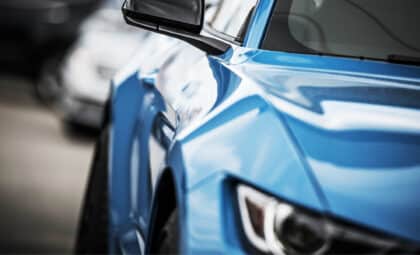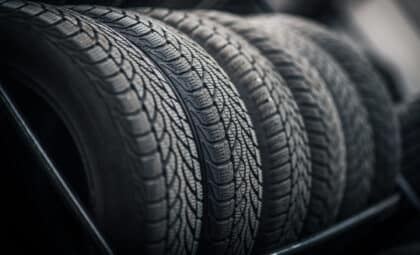Photo: Pexels
We’ve all heard it before.
“She’s a beauty,” the car salesman says as you sit down in what just might be your new Corvette. Then, as you pull it into the driveway, your neighbor asks, “When are you going to let me take her for a spin?” Cars are notoriously referred to as female; but why?
There’s no definitive reason for or origination of this expression. However, there are a few theories circling about where the expression came from:
Let’s start with the most common. For a lot of car owners, their car is extremely important to them; it’s a second home. Many car owners even see their car as having its own personality, claiming that it is its own being. Some people theorize that this concept elicits the natural response: giving the persona a gender. Straight males are often expected to be obsessed with their cars; it’s “masculine” and “tough” (another stereotype I could argue at length, but I digress). For that reason, logically, a straight male’s counterpart would be a female. So there’s one theory.
Another theory is that the expression dates back to the days of ships carrying cargo, including passengers, across the open ocean. Once again, it’s unclear where the expression came from in terms of the ship, but there’s a theory there as well; some believe that referring to ships as female was a metaphor for ships being “containers” carrying freight and cargo to be delivered at a later date, similar to a woman bearing children. If we’re going to go with that theory, that leads me into the next theory: women being seen as objects.
It’s a well-known argument in modern society that women are seen as objects. This portrayal is shown through the objectification of women on magazine covers, advertisements, in film, television, and anywhere else that will reach the masses. Referring to cars as female supports this notion; I don’t know about you, but I hardly ever hear anyone refer to a car as “he” or “him.” This points to the problem in our society in which women are seen as less than, simply objects to help support men and get them from Point A to Point B.
In regards to the ship analogy, women are simply seen as “containers” used to bear children. Decades ago, when waterways were the most common form of intercontinental transportation, the ship was not a person; it was an object. The cargo, or the male passengers, were seen as people. There is a big difference. When you compare females to the object and males to the people, it puts a subconscious picture in the heads of the public that portrays women as lesser, which is working directly against the concept of equality.
First and foremost, let me offer a disclaimer:
Feminism gets a bad rap. While many people see feminists as man-hating, angry women who refuse to get married or shave their legs, that’s most certainly not the case. Its definition is simple: feminism is a social movement advocating for the equality of the sexes. If men don’t have to shave, women don’t either – but, if a woman or man desires to shave their legs, a feminist will support that too. Feminists are often seen as advocating only for women, simply because women are most often given the short end of the stick. However, a genuine feminist will advocate for all gender identities and the injustices they face.
Okay, now that we have that cleared up, back to business.
Today’s version of feminism is no longer the same as the first and second wave. In the United States, women have the right to vote; we aren’t striving for that anymore. However, there are injustices both genders face on a day to day basis, both in the United States and abroad. For example, did you know some countries have made it illegal for women to drive?
Referring to cars as “she” promotes the ideology that women are objects; things to be seen as property owned by men. For many, this notion is subconscious. However, subconscious or conscious, it’s detrimental. If a person has the subconscious belief that women are not as good as men, they will treat them as such.
But don’t lose hope. Recognizing the problem is the first step to changing anything.
Men are not the only ones interested in cars. In fact, while cars are largely marketed toward a male audience, females make up more than half of automotive sales; females purchase 52% of vehicles sold and have an influence on 85% of purchases, according to Forbes.
So, what can you do? First, the obvious: stop referring to your car as “she.”
When referring to another person, there are three main singular pronouns: he, she, and they. “He” is used for those who identify as a male. “She” is used for those who identify as a female. “They” is used for those who wish to be referred to by that pronoun, opposing the notion of gender altogether. Use them consciously and properly.
Another thing you can do is simply spread the word. Educate others on the issue of gender equality and the ways inequality can creep into our daily lives. Speak up when someone misuses pronouns, referring to an inanimate object as if it were a female.
Support the automotive industry’s integration of female executives. Just a few years ago, General Motors made history by naming the first female Chief Executive Officer (CEO) in the automotive industry: Mary Barra. These are the kinds of steps forward we should encourage. Stand up for the ones that make positive changes like this, and stand against the ones that don’t.
We can all do something. For me, writing this article is helping to shed light on an issue that contributes to an even larger issue. The inequality of the sexes is a downfall of our society, one that will cause problems for decades to come. But hopefully, with small changes like how we refer to our vehicles, we can help change that.
Oh, and while we’re at it, can we stop posing models on new cars at auto shows? Please and thank you.
Sources: Forbes, Phrases.org, Quora
Meg Thomson is a writer, photographer, blogger, and activist. When she isn’t writing, Meg can be found immersing herself in television scripts, adopting and playing with animals, or updating lists of her dream travel destinations (the list never ends). Meg believes writing is power, and equality is essential. She is determined to make a difference in the world, one word at a time. See more articles by Meg.










